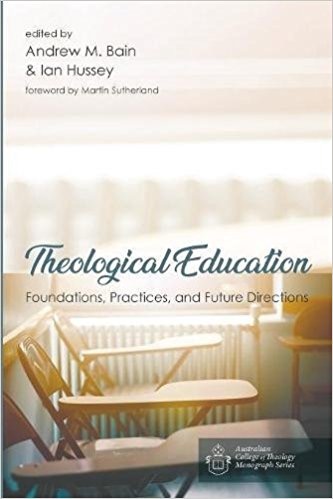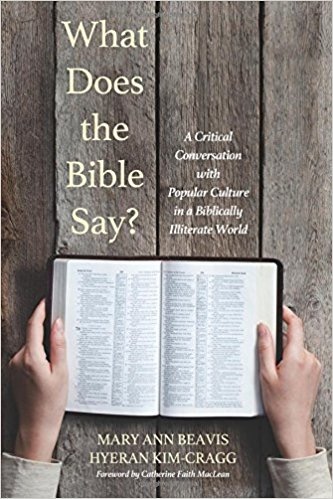
Book Reviews - 476 results
Select an item by clicking its checkbox
Education in a Catholic Perspective
Date Reviewed: January 19, 2015
Higher education is in a state of flux amidst a cache of challenges that might be cast as a new set of unanticipated three R’s: recruitment, retention, and reserves. As college administrators strategize for the future, the shifting demographics in traditionally student-rich areas and the overall decreased pool of potential students because of birth rate trends will make sustaining college operations increasingly difficult. The challenge is more acute for private colleges and universities, whose sticker price tends to be substantially more than those of public institutions. It is perhaps even more poignant for Catholic institutions of higher learning that educate students in a particular religious environment.
No two Catholic schools are the same and most wrestle with what it means to be Catholic. Some institutions boldly proclaim strong Catholic identity while others loosely reference their Catholic tradition or grounding. The number of students, faculty, and administrators on campuses self-identifying as Catholic complemented by the frequency of Catholic activities and choice of campus speakers have tended to serve as the metric for determining “how Catholic” an institution is. The first measure is reasonable. Without a critical mass of Catholic students, a Catholic school risks losing its identity. What precise percentage of Catholic students is needed for an institution to call itself Catholic, however, remains unsettled, but the ongoing admission of non-Catholic students merely to sustain rolls cannot bode well for the future of Catholic schools. As an example of the second metric, Notre Dame in South Bend, Indiana, often recognized as “the” Catholic university in the United States, received a maelstrom of criticism when it invited President Barack Obama to give its 2009 commencement address. Its detractors believed engaging an individual who holds views contrary to the Catholic faith lessens the Catholicity of the school.
In Education in a Catholic Perspective, Stephen J. McKinney from the University of Glasgow, U.K., and John Sullivan from Liverpool Hope University, U.K., recognize that the identity of Catholic schools is at stake. They state that “there is an increasing distance between Catholic education, in its many forms, and the rich intellectual heritage of the Catholic Church” (3). Rather than engaging in a polemic against post-modern neoliberal ideas that can threaten the preservation of Catholic identity, their text seeks to retrieve the philosophical and theological roots of Catholic education.
The book is divided into five parts. In the first section, the “Introduction,” two chapters written by Stephen J. McKinney orient the reader to the overall thrust of the text. McKinney’s first describes “education” in the Western world and then moves onto to discussing “Catholic education” using post-Vatican II teachings of the Catholic Church. McKinney admits the ongoing challenges Catholic education faces as it moves forward amidst the steady barrage of criticisms including charges of proselytizing and of being elitist and anachronistic. His assessment is honest and builds on critical scholarship in this area.
The second part, “Theological Foundations,” consists of three articles that shore up the religious supports of Catholic education. John Sullivan writes on the import of St. Augustine and Maurice Blondel to Christian education. Vivian Boland considers Thomas Aquinas’s contribution to Catholic education through his understanding of transcendental properties of truth, goodness, beauty, and integrity. Clare Watkins considers revelation, scripture, and truth vis-à-vis truth in its beauty and love in its tenderness as formidable underpinning for Catholic education.
In Part III, “Theology and Education,” Stephen McKinney and Robert Hill propose Jesus as a Teacher and reading the gospel from new perspectives to inform learning and teaching. David Torevell writes on epiphany, worship, and the contemplative body in Catholic education suggesting inward silence and embodiment as a distinctive import from Catholic tradition for education. David Evans demonstrates that the intersection of faith and reason is the “route to wisdom” and a holistic appreciation of education. Clare Watkins examines the role of conscience formation in education and teachers’ critical responsibility in fostering that in their students as well as in their own search for God.
The fourth part of the text considers “The Ecclesial and Social Dimension” of Catholic education. In the first two articles of this section, John Sullivan considers the tension between the individual and institution and then moves to discuss the Church and the World. Sullivan refrains from an “over and against” attitude of Catholic education towards society. Sullivan proposes a participative engagement model in service of the world for all involved in the project of Catholic education. Christine Forde concludes this section by considering “the troublesome concept of ‘gender’” and offering challenges from feminist theology. Forde’s work here can serve as a prelude to further discussion about other disquieting contemporary moral issues such as medical coverage, homosexuality, divorce and remarriage, and investment policies, to name a few.
The concluding fifth part, “Mission into Practice,” considers how to make the proposals in the text a sustainable reality. Kevin Williams suggests the development of a “Catholic” curriculum that incorporates specific teaching and learning goals. William’s piece seems out of place with the rest of the rather conciliatory text, but perhaps further development of his work is needed to fully appreciate his suggestions. Finally, John Sullivan and Stephen McKinney explore practical implications of strengthening the internal core of Catholic education in an effort to make it a viable educational option for the future.
As Catholic school leaders strive to understand their institution’s Catholic identity, they would be wise to reference this text. Students of philosophy and theology will also find this book of interest in relation to their respective fields of study. It could be useful for educational specialists seeking to understand Catholic education. The book provides a rich critical assessment of some of the major thinkers in the history of Catholic education and their import for today. It includes a resource-rich bibliography and a detailed index.
Leaders concerned with the future of Catholic education have to pay sharp attention to the externals that challenge institutional growth. However, what McKinney and Sullivan have assembled here offers another no less important and, perhaps, even more critical investigation into how to chart the future of Catholic education in a more meaningful way.

Integrating Work in Theological Education
Date Reviewed: October 18, 2017

Theological Education: Foundations, Practices, and Future Directions
Date Reviewed: October 1, 2018
This edited volume of 21 articles explores the biblical and theological perspectives, historical foundations, current practices, and future directions of theological education in Australia and was published as part of the Australian College of Theology Monograph Series. The authors represent a wide array of theological disciplines including church history, Old Testament, New Testament, pastoral studies, Christian education, evangelism, spirituality, and theology. In addition to their academic disciplines, the authors come from a variety of backgrounds including adjunct faculty, faculty, administrators from academic intuitions and from the Australian and New Zealand Association of Theological Schools, as well as pastors mainly from evangelical perspectives.
Building upon the concept that the church follows where theological education leads, the editors of this volume, Bain and Hussey, argue in their introduction that “theological education is too important a task to be done without careful and ongoing thought. The imperative to be reflective about how we go about our task as theological educator is amplified dramatically by the changing world in which we live” (xix). This volume attempts to survey this current reflection on theological education in the Australian context.
The first section of this volume, Biblical and Theological Perspectives, offers three chapters that explore how the ontological view of the centers of theological education impact their praxis. These three chapters represent one of the most insightful parts of this book as the three authors all successfully explore how theological assumptions and perspectives shape how theological education has and is happening in Australia. Barker explains “I offer my reflections on how an evangelical understanding of what we are teaching should shape how we teach it” (4). Many of these same concepts emerge in Starling’s article, “The Scribe, the Steward, and the Inhabiting Word,” where Starling asks how these three metaphors “inform the way in which we seek to shape the curriculum for theological education in our own time and the institutions within which we teach it?” (25).
In the second section, Historical Perspectives, six articles explore the historical foundations of theological education in Australia. These chapters examine a variety of themes including theological education in early Christianity, models of western theological education, the impact of American theological education (especially the recently closed Andover Theological seminary), as well as Australian specific chapters with histories of the Australian College of Theology and Sydney Missionary and Bible College.
The third and largest section of this book, Current Practices, provides nine articles that examine a variety of current perspectives and groups within Australian theological education including: women, the Chinese immigrants, missional approaches, spiritual formation, attrition, cross-culture ministry, and an empirical exploration of who is currently engaged in theological education.
The final section, Future Directions, offers three articles that explore future directions of theological education in the Australian context. Although these three authors provide solid chapters on telecommuting staff and challenges for theological education, this is the weakest section of this volume. After providing a broad foundation with historical perspective and current practices, the future directions lack the visionary perspectives of the rest of the book. It would have been wonderful if this section could have been expanded to examine many of the challenges identified in the Current Practices section.
This title provides a valuable piece to the puzzle of theological education around the globe. Theological education is a complex endeavor and through the contextualization of various methods and historical models to it, the challenge of theological education can be addressed with wit and wisdom. This is an important volume and should be added to the collection of major theological libraries and institutions that explore the history of religion and/or approaches to theological education.

What Does the Bible Say? A Critical Conversation with Popular Culture in a Biblically Illiterate World
Date Reviewed: October 4, 2018
Mary Ann Beavis and Hyeran Kim-Cragg, a biblical scholar and a practical theologian, respectively, address a number of topics that are engaged by people outside of the contours of usual religious contexts; those who tacitly or consciously engage with scriptural and religious themes. It is this audience that the authors seem in particular to target: the everyday person whose religious viewpoints are influenced by media and popular culture, without their realizing the underlying misconceptions borne of poor theologies, or uncritical appropriation of traditions with little or no basis either on sound doctrine or biblical knowledge. In juxtaposing biblical themes such as creation and apocalypse, sin and salvation, Moses and Jesus, Jews and Christians, God and Satan, Christ and Antichrist, gender and God, purity and sex, and suffering and sacrifice, in a creative dialogue with cinematic culture, the authors seek to dispel many of these aforementioned misconceptions.
Beavis and Kim-Cragg have succeeded in making scholarly information accessible, taking pains to define technical terms – whether Hebrew, Greek, or theological jargon – that would otherwise be foreign to nonexperts. They provide solid exegetical and theological analysis of the themes they have chosen. Readers and teachers will find the creative way in which they use movies from a wide array of genres to further their discussion helpful. “Before viewing” and “after viewing” questions allow one to link their cinematic selections with the theological theme under discussion. This is especially helpful since, for the most part, the authors did not choose religious movies; it is, after all, an engagement with popular culture, not religious media.
As a professor of constructive theology, I especially appreciate the discussion of salvation in chapter 2, subtly broadening its meaning by disconnecting it from the notion of sin and at least implicitly relating it to the Reign of God, and their discussion of eschatology in chapter 5, rightly linking it with relationship. Another discussion which I found to be of importance in this time of intolerance and rising tides of anti-Semitic, anti-Muslim, and nativistic impulses, was their discussion on Jews and Christians (chapter 4). While their assertation that “Jesus was a Jew” might seem simplistic, I can attest to the fact that such a statement can be a surprise to some beginning seminary students. Beavis and Kim-Cragg honestly tackle texts in Second Testament that have been interpreted as “anti-Jewish” as well as the history of anti-Semitic interpretations in Christian theology. It is their conclusion that in spite of this persistent prejudice, we stand well to remember that “God blesses all” (62).
For teachers in the areas of practical theology, this book can be used in courses that integrate biblical studies with Christian education, theology, or preaching. The authors’ approach to theological themes can prove helpful to beginning seminary students who come with popular misconceptions, only to become disconcerted by learning in the classroom what they believe to be contradictions of faith. The book’s methodology of integrating theological content with media is insightful and consonant with the contemporary world in which our students live and practice ministry. It is particularly useful as teachers become aware of the various learning styles of students and expands their arsenal of creative pedagogical practices. I would hope that this book invites teachers to consider the use of movies, music, photography, and online content such as TED talks in their classroom. This book is a good companion to such sources as Timothy B. Cargal’s, Hearing a Film, Seeing a Sermon, although the latter tends to focus more on homiletical and liturgical integration.
I do have some questions. While I assume that the audience for this book is either a lay or church community, the authors themselves never clearly identify their audience: is this meant for a more evangelical or progressive church community, or was it directed primarily to an unchurched community? I would have found it helpful for the authors to have been more explicit about their audience. This leads to a second question: why their particular juxtaposition of selected themes? Was it influenced by context and audience? For example, why discuss God and gender, and not God and justice? Would the latter not have allowed the discussion to be broader than simply whether our God-talk is inclusive in terms of male or female images? At a time of imposition of heteronormativity, homophobia, and rising tide of violence against people of color, it could have led to larger questions about white privilege, and broader assumptions about gender could have been broached. Along those lines, could the discussion have been further enriched with the inclusion of more voices of color, both in the authors’ scholarly sources and in their movie choices? Could some of these very themes have been underscored with such movies as Hidden Stories, The Color Purple, Selma, Even the Rain, The Joy Luck Club, or others that showcase actors of color or LGBTQI persons?
These questions, of course, do not detract from the overall importance and value of the book. This book, with its solid theological and biblical analyses, is an important resource particularly for those of us who continuously encounter groups or individuals in our churches, classrooms, and communities that espouse uninformed biblical and theological beliefs influenced by popular culture.

Student Motivation and Quality of Life in Higher Education
Date Reviewed: November 30, -0001
Student Motivation and Quality of Life in Higher Education provides readers a constructive overview of the relationship between student motivation and quality of life (QOL) in higher education. In five parts comprising twenty-three chapters, the book presents a wide range of topics and emphases. Part I, “Student perspectives,” offers two student case studies (one undergraduate, one graduate), relating their perspectives and experiences as to influences on personal QOL and learning motivation. These reflections set the stage for Parts II through V.
Part II focuses on “Theoretical perspectives” concerned with matters of learning motivation, QOL and higher education, and applied positive psychology in higher education (chapters 3-5, respectively). Part III attends to “Diversity perspectives on motivation to learn and quality of life,” containing ten chapters encompassing wide-ranging variables such as international student well-being, higher education views among various nations and people groups, health-related and disability impact on QOL and motivation to learn, and effects of optimism and positive orientation on student well-being and learning. Part IV centers on “Promotion of motivation to learn and quality of life in higher education,” comprising six chapters examining and reflecting on improving academic QOL via counseling, resilience in students and teaching resilience skills via a computer-assisted learning website, eLearning support for mental health and perceived self-efficacy, a peer support program for student well-being, curriculum implications resulting from QOL and motivation and professionalism studies, and reclamation of light and liberty and learning related to higher education and student stress. Part V, the final chapter (23) “Synthesis of motivation to learn and quality of life,” presents the editors’ conclusion and a proposed integrative QOL and student motivation model.
Evident strengths of this book include the important (and apparently original) intentional integration of QOL and student motivation, supported with substantive research, reflection, and proposals. Additional strengths of the book include the breadth of the general subject matter and variety of global perspectives. Chapters vary somewhat in terms of research, reflection, and presentation quality (not atypical of edited volumes). One apparent (and somewhat paradoxical) weakness concerns the book’s striving for – and generally achieving – various and useful diversities while also limiting its general ethos to mainly (though not exclusively) medical and health-related students, curricula, and attention. Broadening the research and application to include a wider base of students, disciplines, and curricula (more liberal arts, for instance) would foster greater connectivity within broader academia (undergraduate and graduate) – enhancing the appeal and merit of this already fine tome.
Of particular importance is the dynamic “evolving model of education-related quality of life” (210), summarizing well the overall research findings and important reflective and application possibilities pertaining to student motivation and QOL in higher education. The model avoids reductionistic tendencies owing to its complex, symbiotic, and holistic orientation.
I recommend this book as a constructive resource for higher education institutions (public and private): the book represents a strong effort toward advancing its stated goal of combining “the concepts of motivation and quality of life with the view to enriching the educational sector” (212).

